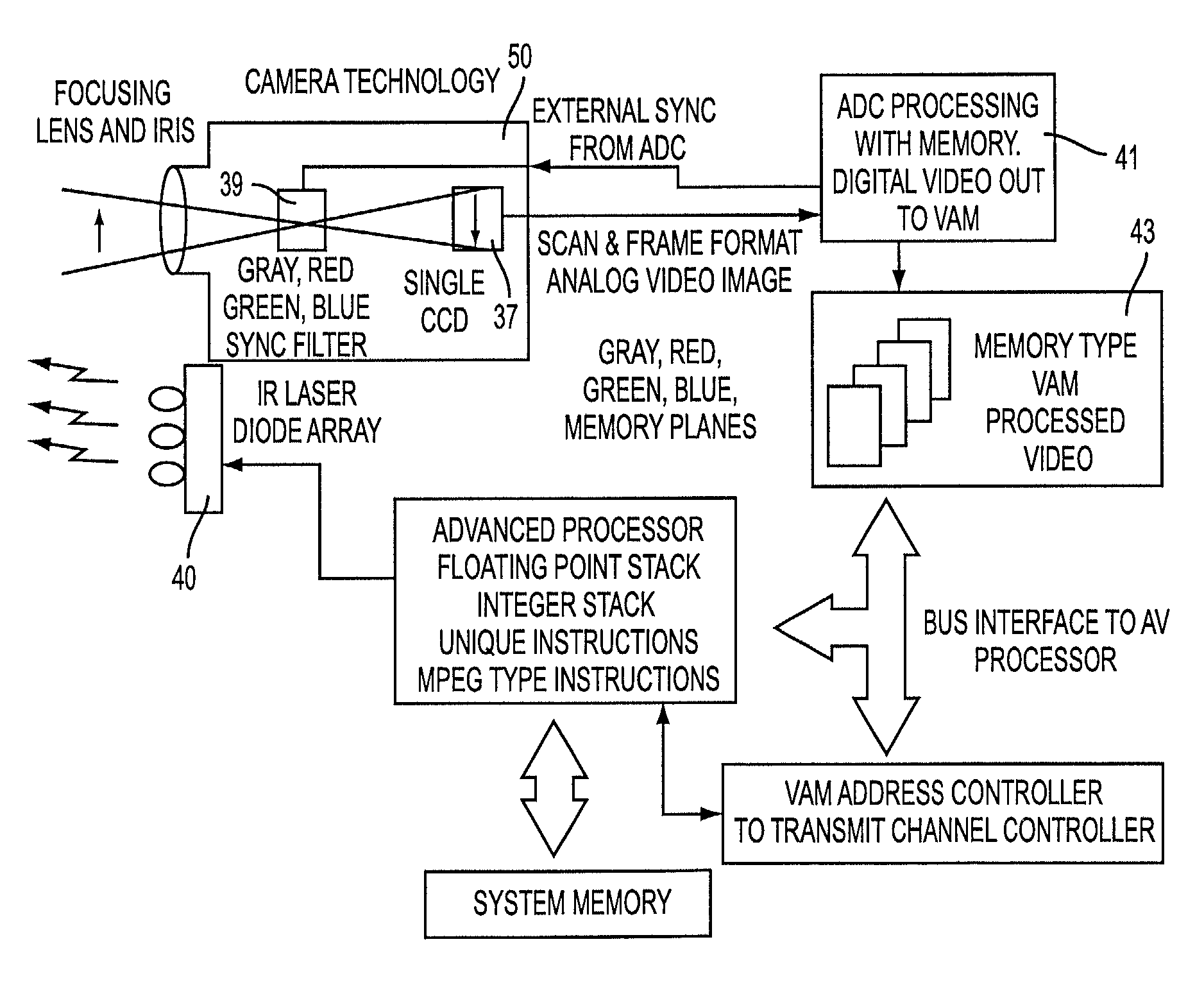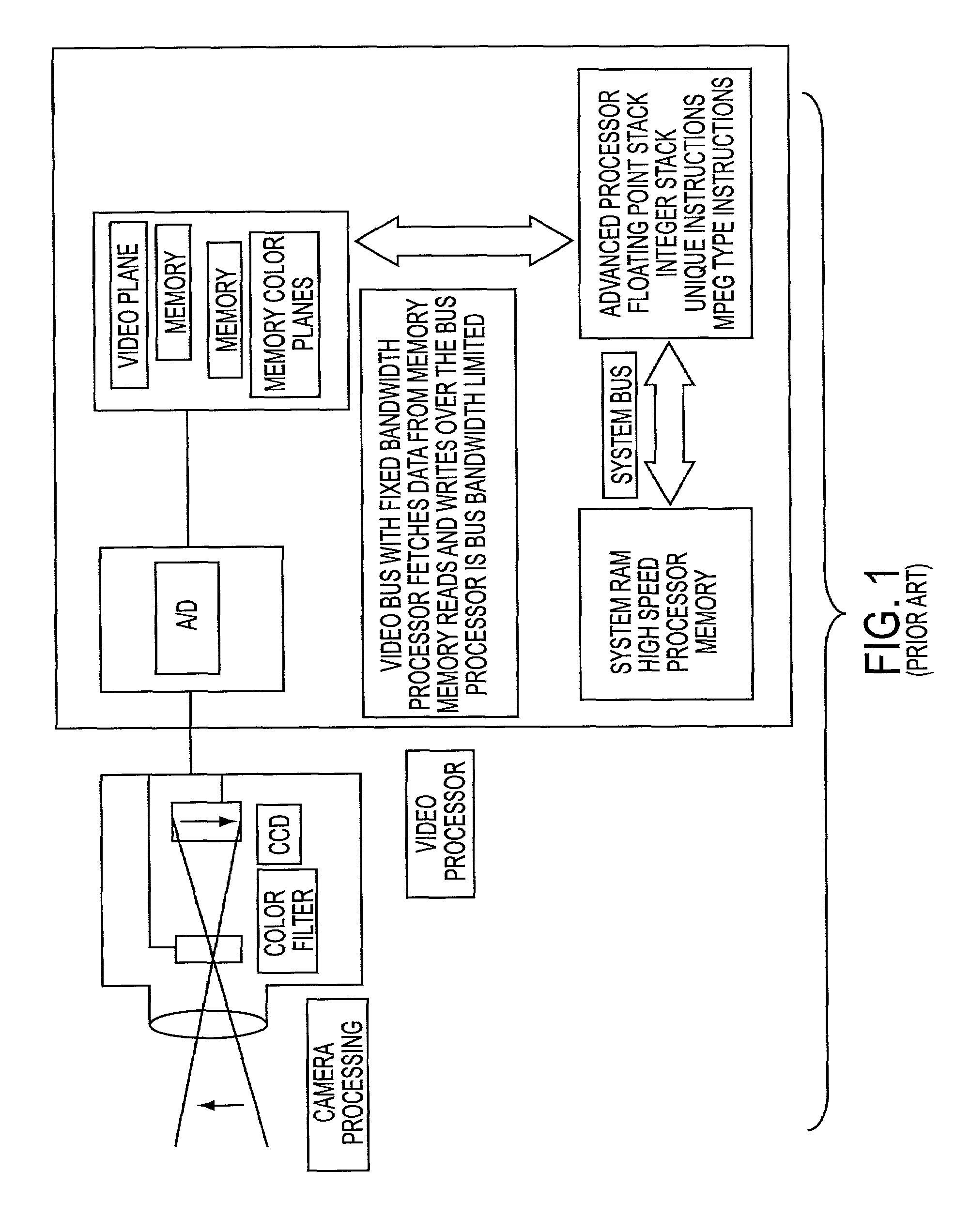System and method for generating digital data and processing in a memory
a digital data and memory technology, applied in the field of video signal acquisition, processing and transmission systems, can solve problems such as large downstream effort, and achieve the effects of reducing the bandwidth required to transmit, increasing density capacity, and increasing downstream effor
- Summary
- Abstract
- Description
- Claims
- Application Information
AI Technical Summary
Benefits of technology
Problems solved by technology
Method used
Image
Examples
Embodiment Construction
[0017]The present invention is designed to be used in conjunction with the video processor disclosed in U.S. Pat. No. 5,392,227, which is hereby incorporated by reference.
[0018]In video camera systems now in use, the digital representation of video corresponds to its analog representation; that is, the luminosity is represented digitally directly proportional to an analog voltage relative to zero volts. Accordingly, full scale binary numbers are required to represent the analog voltage. The stair step curve shown in FIG. 2 represents digital luminosity values from 0 to 15 requiring a binary number with a radix of four. In this example, 0 would represent a block pixel or a pixel with no luminosity and 15 would represent a pixel with maximum luminosity. In a conventional system, luminosity is typically represented by a binary number being a radix of 8 giving 256 different levels of luminosity. In a method of the present invention, a reference point is established at or near the middle...
PUM
 Login to View More
Login to View More Abstract
Description
Claims
Application Information
 Login to View More
Login to View More - R&D
- Intellectual Property
- Life Sciences
- Materials
- Tech Scout
- Unparalleled Data Quality
- Higher Quality Content
- 60% Fewer Hallucinations
Browse by: Latest US Patents, China's latest patents, Technical Efficacy Thesaurus, Application Domain, Technology Topic, Popular Technical Reports.
© 2025 PatSnap. All rights reserved.Legal|Privacy policy|Modern Slavery Act Transparency Statement|Sitemap|About US| Contact US: help@patsnap.com



